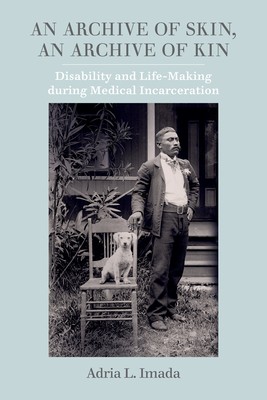
- We will send in 10–14 business days.
- Author: Adria L Imada
- Publisher: University of California Press
- ISBN-10: 0520343859
- ISBN-13: 9780520343856
- Format: 15.2 x 22.9 x 2.3 cm, softcover
- Language: English
- SAVE -10% with code: EXTRA
Reviews
Description
What was the longest and harshest medical quarantine in modern history, and how did people survive it? In Hawaiʻi beginning in 1866, men, women, and children suspected of having leprosy were removed from their families. Most were sentenced over the next century to lifelong exile at an isolated settlement. Thousands of photographs taken of their skin provided forceful, if conflicting, evidence of disease and disability for colonial health agents. And yet among these exiled people, a competing knowledge system of kinship and collectivity emerged during their incarceration. This book shows how they pieced together their own intimate archives of care and companionship through unanticipated adaptations of photography.
EXTRA 10 % discount with code: EXTRA
The promotion ends in 9d.23:31:09
The discount code is valid when purchasing from 10 €. Discounts do not stack.
- Author: Adria L Imada
- Publisher: University of California Press
- ISBN-10: 0520343859
- ISBN-13: 9780520343856
- Format: 15.2 x 22.9 x 2.3 cm, softcover
- Language: English English
What was the longest and harshest medical quarantine in modern history, and how did people survive it? In Hawaiʻi beginning in 1866, men, women, and children suspected of having leprosy were removed from their families. Most were sentenced over the next century to lifelong exile at an isolated settlement. Thousands of photographs taken of their skin provided forceful, if conflicting, evidence of disease and disability for colonial health agents. And yet among these exiled people, a competing knowledge system of kinship and collectivity emerged during their incarceration. This book shows how they pieced together their own intimate archives of care and companionship through unanticipated adaptations of photography.


Reviews